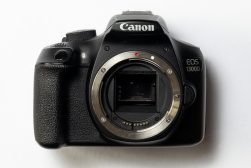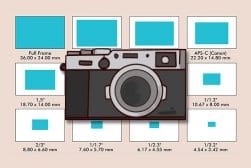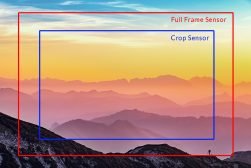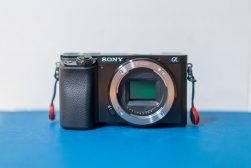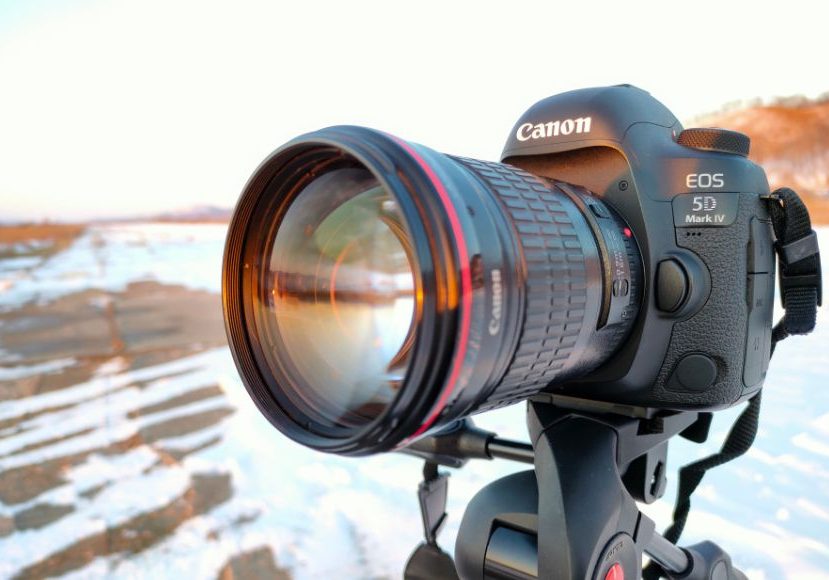
Full Frame vs. APS-C Cameras (7 Key Differences to Know)
Full frame vs. APS-C: which camera sensor is better? Both types have several downsides and advantages. Check out this guide to learn more.
Full Frame vs. APS-C cameras has been a widespread topic of debate in the photography community.
Which camera sensor performs best, especially when it comes to delivering high-quality images?
That said, whether a crop vs full frame sensor is better depends on the unique needs of the photographer.
Professional photographers may prefer cameras with full-frame sensors because bigger pixels allow them to capture images with greater resolution, even in low light.
Meanwhile, many hobbyists and street photographers opt for APS-C cameras due to their compact size and affordability. However, many pros still find the latter useful.
This beginner-friendly guide will walk you through the features of each sensor type and how they compare with each other.
At the end of the article, you’ll discern which camera sensor type is best for your photography needs.
Table of Contents
The Basics of Camera Sensors Explained

Source: Canva
Before you jump through the details, allow me to prime you with the foundations of camera sensors first.
Camera sensors are the core component of digital cameras. Millions of light-sensitive pixels make up these rectangular chips, usually made with a semiconducting material like silicon.
There are two significant types of image sensors used in digital cameras: CMOS or complementary metal oxide semiconductor, and CCD, which stands for charge-coupled devices.
Of the two, CMOS is the most popular material for DSLR image sensors and converts visual information faster, reducing battery consumption.
How Does a Camera Sensor Work?
Think of camera sensors as the film counterparts in analog cameras. They also work with the same principle as the retina in the eye, which captures the image and transmits it to the receptors in the brain.
They’re positioned right behind the lens and work by capturing the scenery it focuses on.
The sensor captures the light or photons through the pixels and converts them to voltages or digital signals. As a result, these signals display an image.
What Are the Different Camera Sensor Formats?
The sensor size or format is an essential factor to consider if you wish to capture a more extensive or better image. Ideally, a larger image sensor can capture more light and detail, thus, guaranteeing higher image quality.
There are two types of sensor formats, namely crop and full-frame sensors. Full frame sensors are larger, so they capture an image from a broader perspective—the view that the lens captures is the same image that comes out.
On the other hand, crop sensors have a crop factor, so they don’t capture the entire view and end up cropping out the outer edges or pixels of the final image. As a result, the image appears closer or with a zoomed-in view.
There are two common types of crop sensors, namely, APS-C camera sensors (or Advanced Photo System Type-C) and Micro Four Thirds, with the former being slightly bigger than the latter.
What Is a Full Frame Camera?
A full-frame camera has a full frame sensor with a much broader dimension compared to APS-C cameras. The full frame sensor is fashioned from a 35 mm film frame, measuring 24 by 36 mm. This is considered the standard format in the professional industry.
Therefore, full-frame cameras capture the entire field of view instead of just a portion. Their key features include better low-light performance, improved dynamic range, and generation of high-quality images.
The first full-frame camera was invented between 2000 and 2002 by Contax.
What Is an APS-C Camera?
Unlike full-frame cameras, APS-C cameras have smaller sensors. These sensors were inspired by the APS film format developed in the mid-1900s.
These cameras have a crop factor, meaning the field of view is cropped or cut off, so the final image appears zoomed in. This happens because the sensor isn’t big enough to capture the entire image.
Seven Key Differences Between Full Frame and APS-C Cameras
Here are the major differences between full-frame and APS-C cameras:
1. Sensor Size
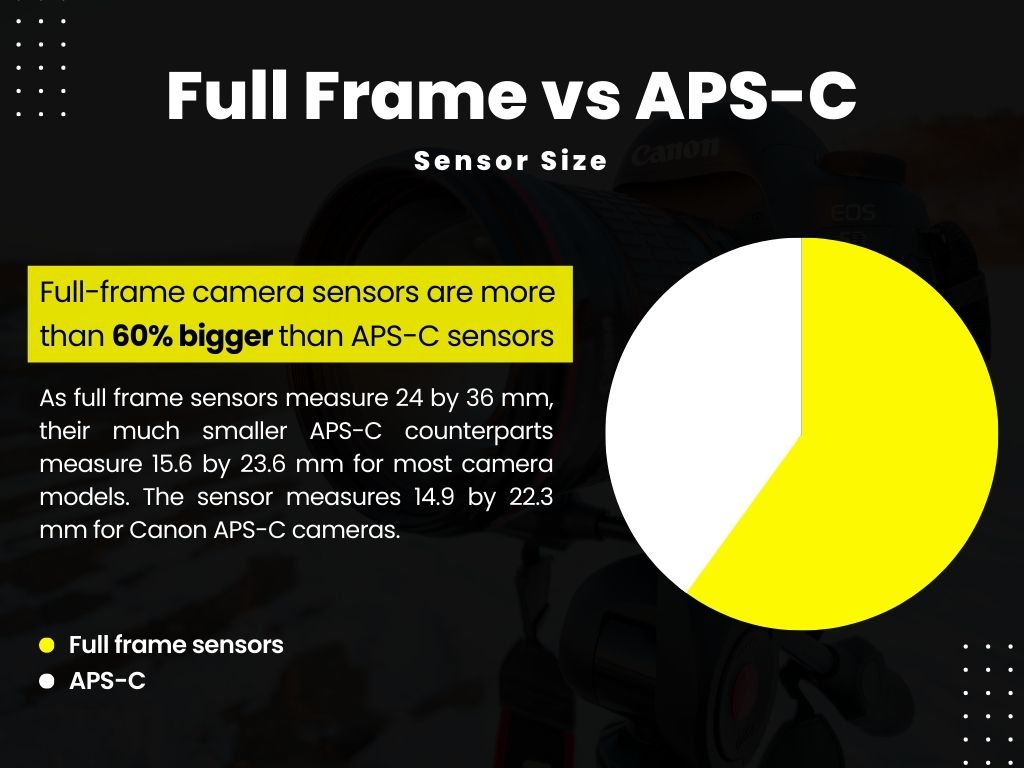
The size is the main characteristic that sets both sensors apart. While full frame sensors measure 24 by 36 mm, their much smaller APS-C counterparts measure 15.6 by 23.6 mm for most camera models. The sensor measures 14.9 by 22.3 mm for Canon APS-C cameras.
That makes full-frame camera sensors more than 60% bigger than APS-C sensors.
2. Camera Size and Type
Full frame cameras are bigger, so they need a bigger camera body to house them. Not to mention that they need bigger camera lenses to cover their large sensor. That leaves full-frame cameras much bulkier and heavier than APS-C cameras.
Full-frame sensors usually power professional and high-end cameras. On the other hand, mid-range or entry-level cameras mainly utilize APS-C sensors.
3. Lens Compatibility
A full-frame camera needs a larger lens with enough circumference to cover the sensor’s surface area without overlapping.
Given that fact, full-frame camera lenses are bigger but fit well with smaller sensors, like ones in APS-C cameras. However, lenses designed for APS-C or cameras with smaller sensors are smaller, making them incompatible with full-frame cameras.
Fitting APS-C lenses on full-frame cameras will create a vignette effect on images, where the edges and corners have a darkened effect.
For example, a Nikon F-mount lens is compatible with full-frame and APS-C cameras. Consequently, you can’t use Sony E-mount lenses specially designed for APS-C cameras on full-frame cameras.
4. Crop Factor
The crop factor is a distinct feature in APS-C cameras but not in full-frame cameras.
Also known as magnification or focal length multiplier factor, the crop factor refers to the measurement comparing the field of view in an APS-C camera to the standard full frame. In short, it’s the difference in size between your camera and the standard full-frame camera.
The crop factor determines the focal length of an image or how much of the scene will be captured. That said, the higher the crop factor, the tighter or closer images look. That way, images appear more zoomed in with a crop factor.
Meanwhile, since a full frame sensor doesn’t have a crop factor, you have a wider field of view of a scenery or subject.
The crop factor in APS-C sensors is usually 1.5 to 1.6, which means that these sensors are 1.5 to 1.6 times smaller than full-frame cameras.
You calculate crop factor in APS-C cameras by dividing the diagonal of the standard full-frame (35 mm) by the diagonal of your sensor.
How the Crop Factor Concept Works:
If you use a 50 mm lens for both a full-frame camera and an APS-C camera, the lens will project the same image in the image circle.
However, the full-frame sensor captures the larger version of the image, while the APS-C sensor captures a much smaller but more magnified version. The APS-C image effectively magnifies 1.5 to 1.6 times (depending on the camera brand).
5. Image Detail and Resolution
Due to their bigger size and bigger pixels, full-frame cameras capture more light and color details. That’s why images appear cleaner, more life-like, and vibrant with good dynamic range.
With a full-frame sensor, images appear more detailed with high resolutions (which means more pixels are compressed into the image) minus the grainy effect. Full-frame photos are also larger, which means that even after cropping the image into a smaller bit, the quality remains top-tier.
APS-C cameras produce high-quality and clear images too. Although users will have to adjust the ISO for low-light environments since APS-C cameras can’t capture light as much as full-frame cameras can.
6. Price
Full-frame cameras are larger and more expensive to manufacture. The camera body and lenses tend to cost more than average, not to mention that sensors contribute more to the cost.
Additionally, full-frame cameras boast sophisticated features and more advanced technology that adds up to the cost.
7. Advanced Features
Full frame sensors, found chiefly on professional cameras, are equipped with several enhancements and advanced technology than mid-range APS-C cameras.
For example, some full-frame cameras have additional protective features or sealing to prevent water entry and elemental damage.
At the same time, full-frame cameras have fast-performing firmware, allowing them to perform smoothly and effectively with no shutter lags, which are pretty common in entry-level digital cameras. They also have additional video features.
Furthermore, autofocus is improved in full-frame cameras. With better autofocus mechanisms, full-frame cameras can capture a subject or scenery in detail without delays, even if it’s in motion.
Some full-frame cameras have more controls and improved battery life.
Full Frame vs. APS-C Sensors: A Side-By-Side Comparison
Here’s a more detailed comparison between Full and APS-C powered cameras in terms of performance and other significant features:
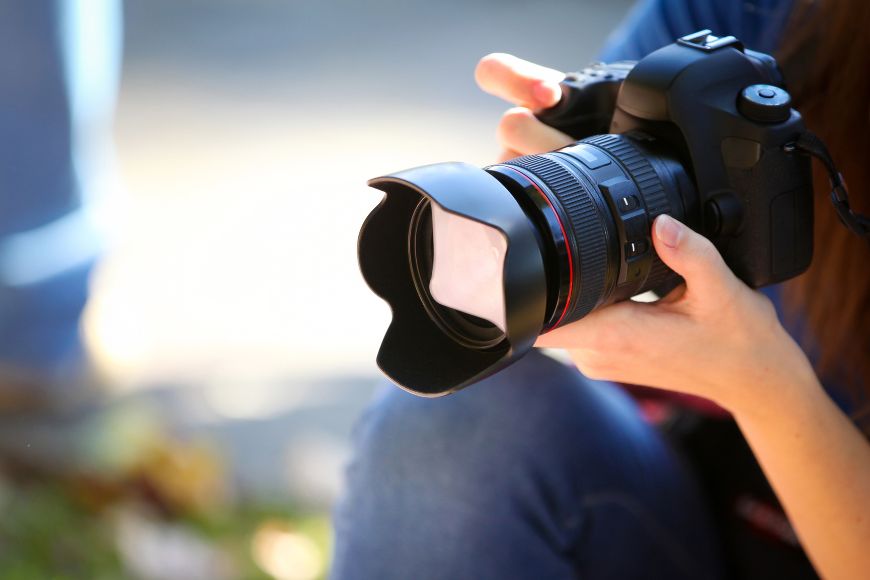
Source: Canva
Full Frame vs. APS-C Depth of Field
Depth of field refers to the distance of the elements in a scenery. Depending on the depth of field of a camera sensor, the focus points vary, and elements will either appear clear and sharp or blurry.
Ideally, full-frame cameras under wide apertures feature a narrow depth of field due to their big sensor size. As a result, the elements closer to the camera appear sharper and more defined, while elements in the background appear softer and more blurry. Simply put, a smaller portion of the image is focused, while the rest is blurry for full-frame cameras.
On the other hand, APS-C cameras have a larger depth of field, so more scenery elements appear in focus. That way, both elements in the foreground and background are clear or with a minor blur effect.
Full Frame vs. APS-C Bokeh Effect
The bokeh effect makes light and other background elements in an image appear more diffused and out of focus. Full frame cameras capture a softer, larger, and stronger bokeh effect than APS-C images, thanks to their narrow depth of field.
And so, you get a visually appealing image focusing on the main subject with the delicate bokeh effect in the background adding an artistic touch. This feature makes portraits more striking by separating the background from the subject.
Full Frame vs. APS-C Dynamic Range
The dynamic range is the ability of sensors to capture detail in different light frequencies and retain the amount of detail in the highlights and shadows. Given that fact, a full-frame sensor has a higher dynamic range, which means it captures images with light frequencies closer to what the human eye can capture.
With a full-frame sensor, cameras can capture better detail in the highlights and shadows. Further, too much or too little exposure isn’t a problem for full-frame cameras, as you can restore the blown-out or overly dark portions in a RAW image.
According to Cornell University, the dynamic range also relates to the ability of the camera to manifest varying tones in an image smoothly. So, full frame images display better colors and clarity.
You’ll notice how images with higher dynamic ranges display better tonal representation, with shadows and highlights displaying more detail or color. This feature has the upper hand compared to low dynamic range images that appear much darker or lighter but with less detail.
Full Frame vs. APS-C Low Light Performance
When it comes to low-light performance, full-frame cameras reign supreme.
Since full-frame cameras with bigger sensors and higher ISO range capabilities gather light better than ones with smaller sensors, they capture details better, even under poor or challenging lighting conditions.
While APS-C cameras can also produce images in low light, these images are less clean and detailed and often come out in grainy quality.
Full Frame vs. APS-C Noise Performance
At low lighting conditions and high ISO settings, images become more grainy.
However, full-frame photos have a larger surface area and pixels to retain light even in poor lighting conditions, producing a clean and detailed photo without compromising image quality.
This happens because full-frame sensors have a better signal-to-noise ratio. Thus, if you zoom identical photos taken at the same ISO by both full-frame and APS-C cameras, the APS-C image is more grainy, while the full-frame photo is cleaner.
Full Frame vs. APS-C Magnification
Images on APS-C cameras appear closer than they look, making it beneficial in capturing subjects in motion.
That said, if you take an image of scenery or moving object from the same distance but with two different cameras, the one taken with a full frame sensor features a wider view or perspective. Meanwhile, the photo taken by the camera with the APS-C sensor appears much closer or larger in the frame.
For APS-C cameras, this aspect allows photographers to save effort on cropping images to enlarge the subject. This saves them time during editing without compromising image quality.
While you can achieve the zoomed effect on full-frame photos by cropping them, the process reduces the megapixel count and decreases the resolution of the images.
That said, if you crop a 20-megapixel full-frame image to achieve a close-up look and framing of an APS-C image, the megapixels of the photo reduces to 12 megapixels or less.
Do You Need Longer Lenses to Improve Magnification in Full Frame Cameras?
Professional wildlife and nature photographer Simon d’Entremont (see video above) suggests using a bigger lens (e.g., a 500 mm lens) for a full-frame camera, especially for wildlife photography.
Since full frame cameras have less effective magnification and you’ll need to take photos from a distance, you’ll need to purchase longer or bigger lenses to achieve the magnifying feature. These massive lenses come with a hefty cost too.
Full Frame vs. APS-C Pros and Cons
The perks and downsides of full-frame vs. APS-C cameras often boil down to image quality, pricing, and additional features.
What are the Pros and Cons of Full Frame Cameras?
Here are the pros and cons of full-frame cameras:
Advantages
1. Better Image Quality
Thanks to its large pixels, full-frame cameras produce high-quality images. They’re also much clearer with a sharper focus due to their narrow depth of field.
2. Excellent Low Light Performance
Full-frame cameras generate high-quality and noise-free images even in challenging lighting or after ISO adjustments. That makes them ideal for indoor or dim settings.
3. More Advanced Features
Full-frame cameras feature additional protection against elemental damage, and they’re equipped with unique features and modifications which allow a better photography experience.
Disadvantages
Despite their enticing features and promising image outcome, full-frame cameras present the following disadvantages:
1. Expensive
Full-frame cameras cost thousands of dollars just for the camera body alone. They usually cost around $2000 depending on the brand, with camera body and lens packages costing more.
Full-frame lenses are also expensive, ranging from around $300 to $1000 and more. At the same time, complete frame camera accessories come with high price tags too.
2. Bulky and Heavier Camera Packages
With big camera bodies and big lenses, carrying around bulky camera packages can be a burden to some. As such, you may need additional accessories like huge tripods and camera gear that are quite heavy to carry around.
3. Limited Lens Compatibility
Due to its bigger sensor size, only large full-frame camera lenses are compatible with full-frame cameras; unlike APS-C cameras that can fit both smaller and bigger lenses. Not to mention that these lenses are much more costly than smaller camera lenses.
What are the Pros and Cons of APS-C Cameras?
Here are the pros and downsides of APS-C cameras:
Advantages
1. Affordability
Good entry-level APS-C cameras are around $1000 at most, but you can purchase ones for around $400.
2. Compact and Travel-Friendly Size
Small sensors mean a small camera body and small lenses. Altogether, an APS-C camera package is relatively small and compact; it can even fit in your pocket.
That way, doing travel and street photography is more convenient; you won’t need to carry massive tripods or gear to mount your camera to.
3. Makes Distant Objects Appear Bigger
This is advantageous for wildlife photographers and sports photographers. You can imitate the same level of crop factor by attaching larger lenses to full-frame cameras, which we don’t recommend if you plan to save on photography costs.
Disadvantages
The cons of APS-C cameras include lower image quality, low signal-to-noise ratio, and lower dynamic range.
Full Frame vs. APS-C: Which Camera Do You Need?
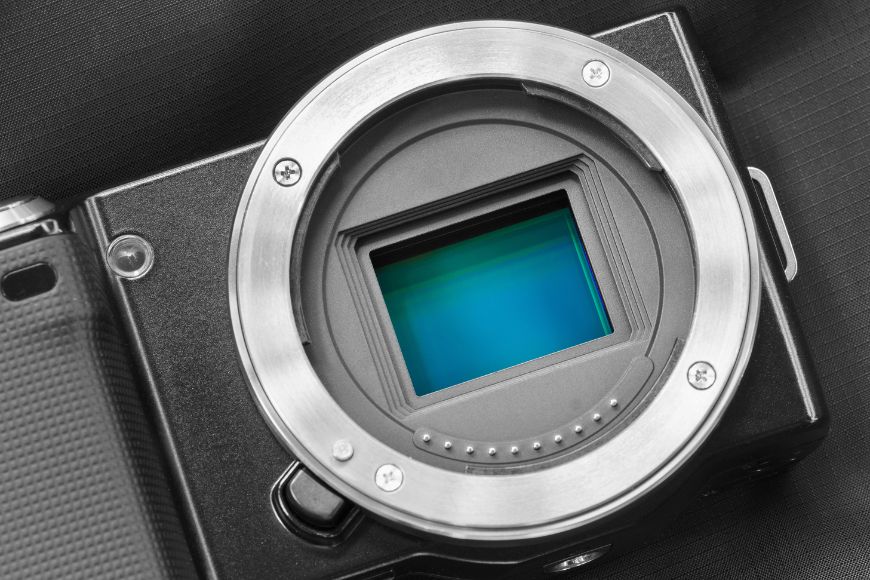
Source: Canva
Here are different ways in which both camera sensor types match with different levels of expertise and photography styles:
1. Full Frame vs APS-C: Which is a Beginner-Friendly Option?
For those learning photography basics, practicing with an entry-level APS-C camera is a good choice. Not only that it’s much cheaper than high-end full-frame cameras, but it produces good-quality images, too (though not on a professional level).
Further, you may want to avoid splurging on the complicated professional features of a full-frame camera.
2. Full Frame vs. APS-C Astrophotography
Full-frame cameras capture better images of the galaxy, starry landscapes, aurora borealis, and other low-light scenery. If you want cleaner images with better color tones and less noise, look no further.
3. Full Frame vs. APS-C Wildlife Photography or Bird Photography
Both camera types perform well in wildlife photography. APS-C cameras allow you to capture moving wildlife in a closer view despite the distance. That makes them beneficial for action photography too.
4. Full Frame vs. APS-C Portraits
Full-frame and APS-C cameras generate promising results in shooting portraits. Unless you want to print a larger image or better resolution, then an APS-C camera is substantial. Also, if you want to incorporate a stronger bokeh effect, a full-frame camera performs better.
5. Full Frame vs. APS-C Landscape Photography
With zero crop factor plus the ability to deliver better quality images with minimal to zero noise, a full-frame camera will capture landscapes and architecture better than APS-Cs.
6. Full Frame vs. APS-C Bright Light Photography
For bright light scenery like the sunrise, a full-frame camera performs better due to its ability to capture the brightest highlights without adding noise.
Final Verdict: Is a Full-Frame Camera Better than APS-C?
Whether a camera with a full-frame sensor is better than a crop sensor or an APS-C camera depends on the photographer’s specific needs.
When it comes to quality, full-frame cameras are unmatched. They have a high depth of field and dynamic range, making photos appear more vibrant and clear even in challenging lighting conditions. The downside is that they’re expensive with limited lens compatibility.
APS-C cameras, on the other hand, are excellent for beginner photographers, although many pros swear by their promising quality and compactness. They’re more light and convenient to travel with, and they make excellent wildlife and portrait cameras.





